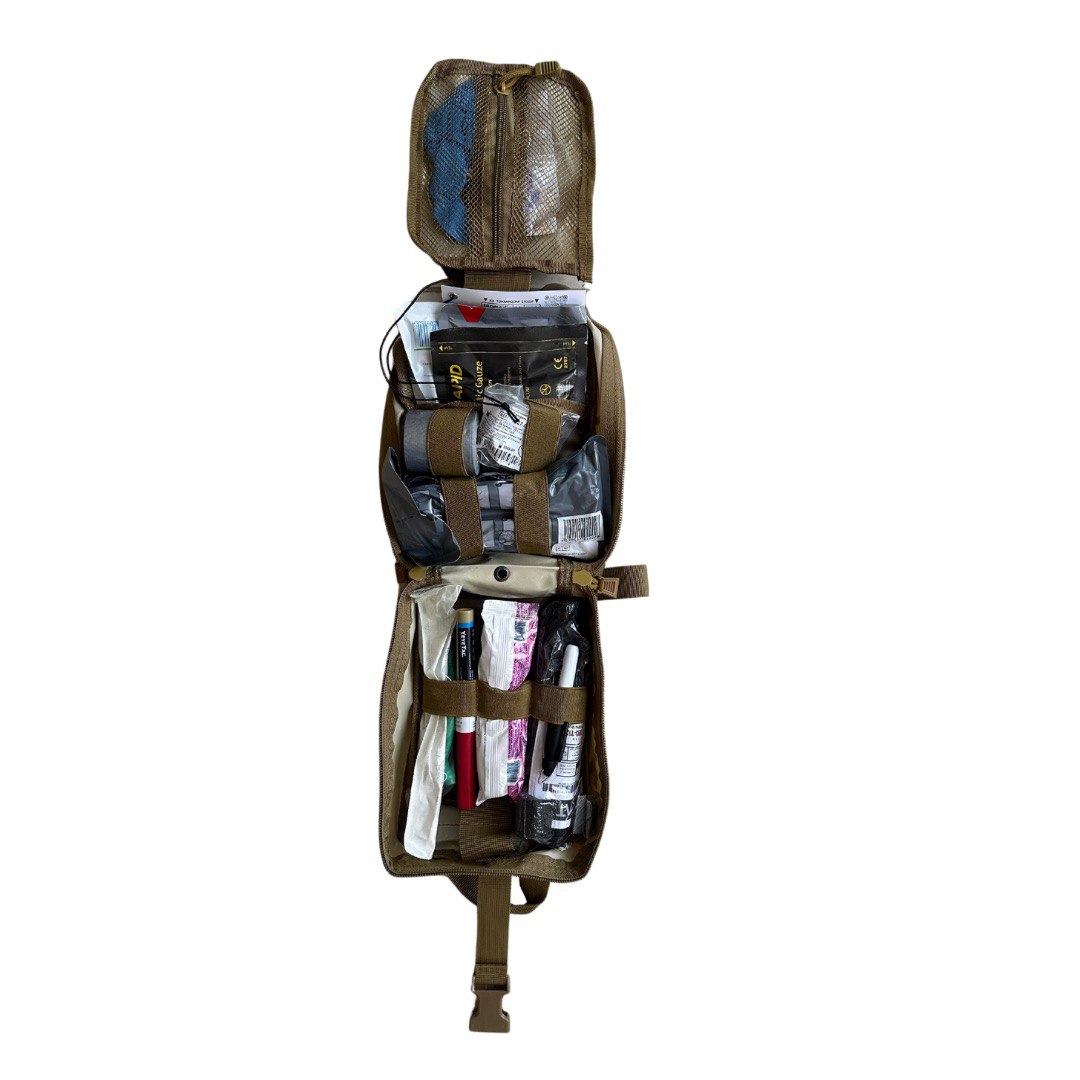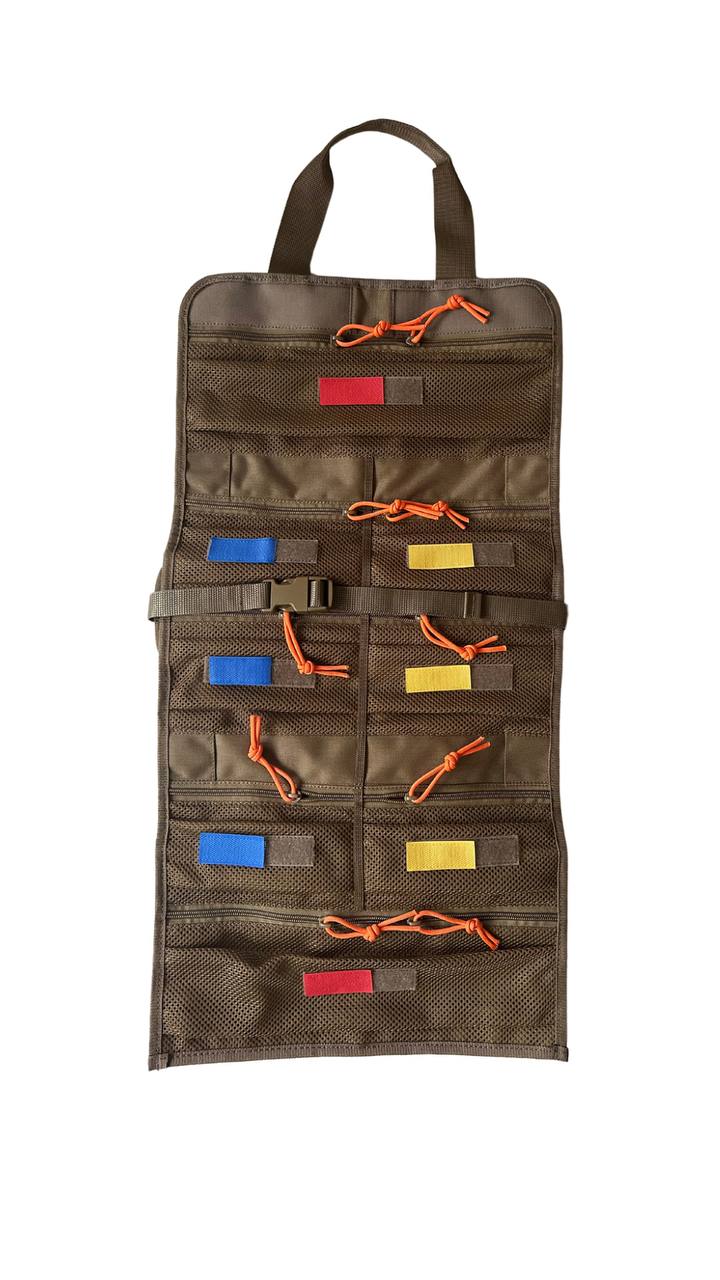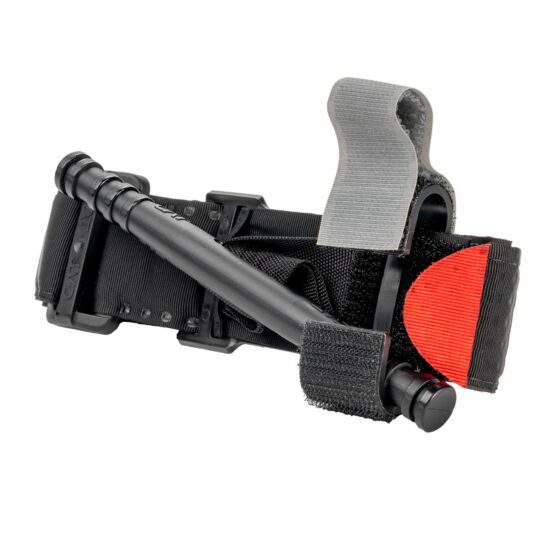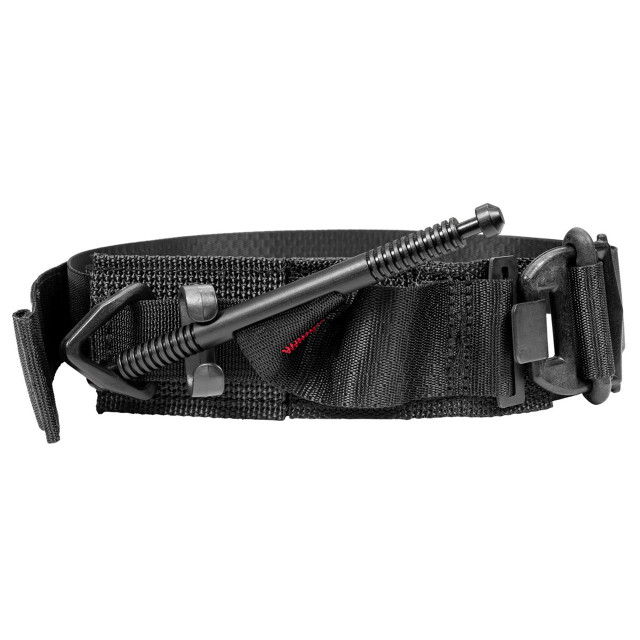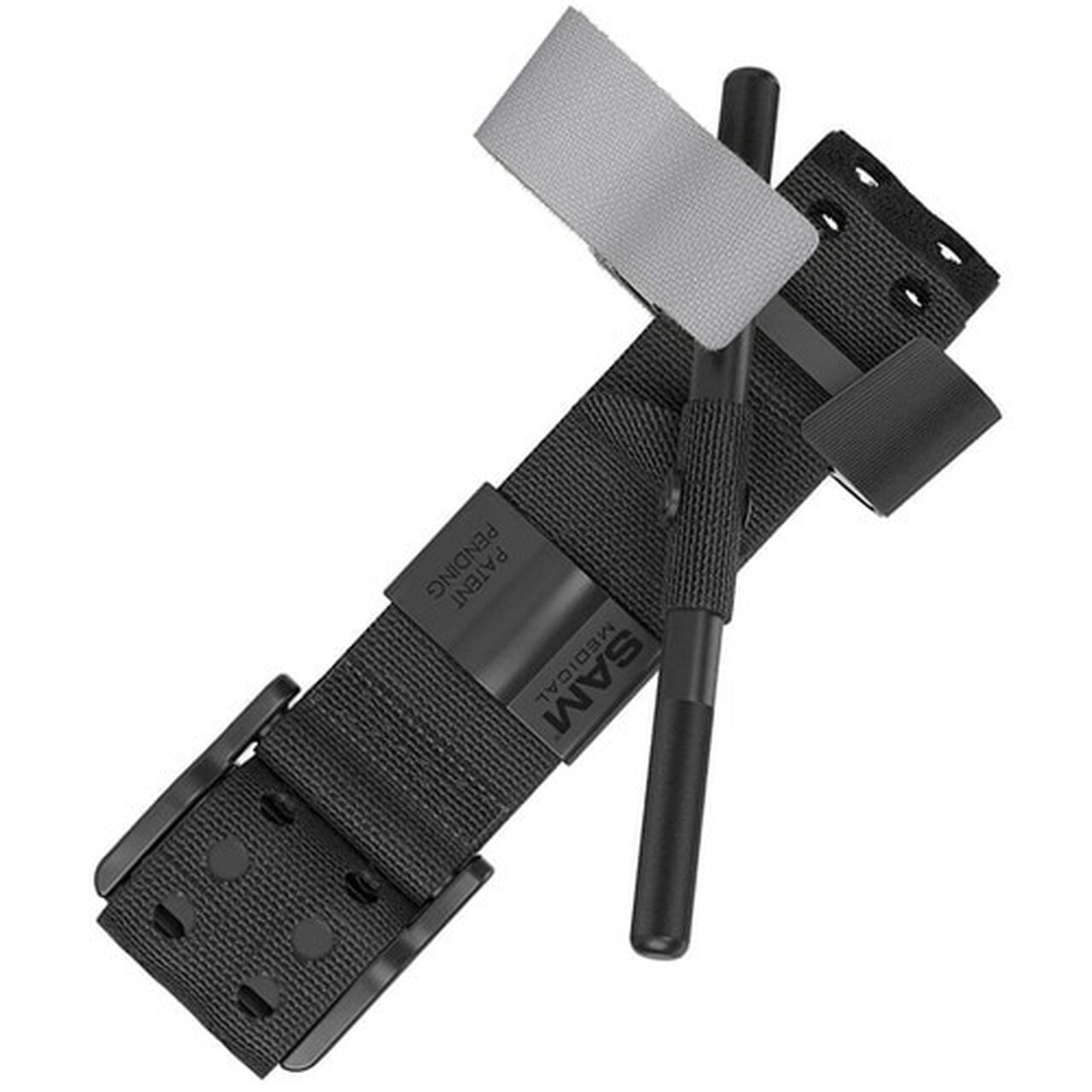What is a tactical first aid kit: equipment according to the IFAK standard
Content
- What should the IFAK military first aid kit contain?
- Tourniquet
- Compression Bandage
- Hemostatic Dressing
- Nasopharyngeal Airway
- Occlusive Dressing
- Thermal Blanket
- Special Medical Equipment
- What Can Be Added to the Tactical First Aid Kit?
- FAQs About Ready-Made Tactical First Aid Kits
- What is a Tactical First Aid Kit (IFAK)?
- What is typically included in a Tactical First Aid Kit according to the IFAK standard?
- How to use a Tactical First Aid Kit (IFAK) correctly?
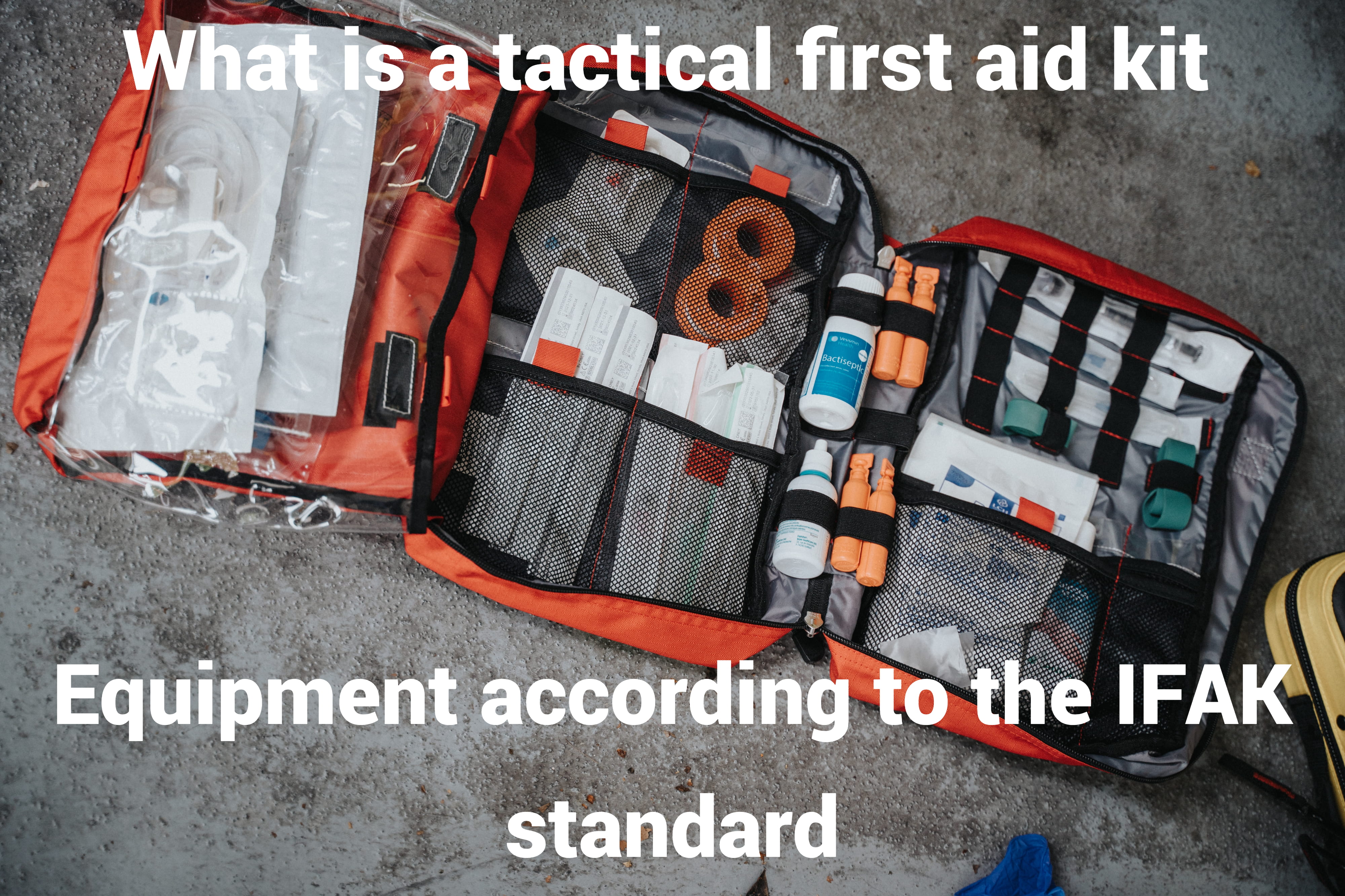
IFAK (Individual First Aid Kit) - is a personal medical kit or first aid kit that meets NATO standards and is an essential component of the equipment for any military personnel. The Ukrainian equivalent of such a kit is called "ІНАП ЗСУ tactical first aid kit" and is practically an analogue of the Western IFAK.
Both Ukrainian and Western versions of NATO IFAK-type first aid kits are not designed for prolonged or medicamentous treatment, as they lack necessary medications. These kits have only one purpose - to provide immediate assistance in the first seconds after injury, eliminate critical consequences (such as massive bleeding), and thereby increase the chances of survival.
What should the IFAK military first aid kit contain?
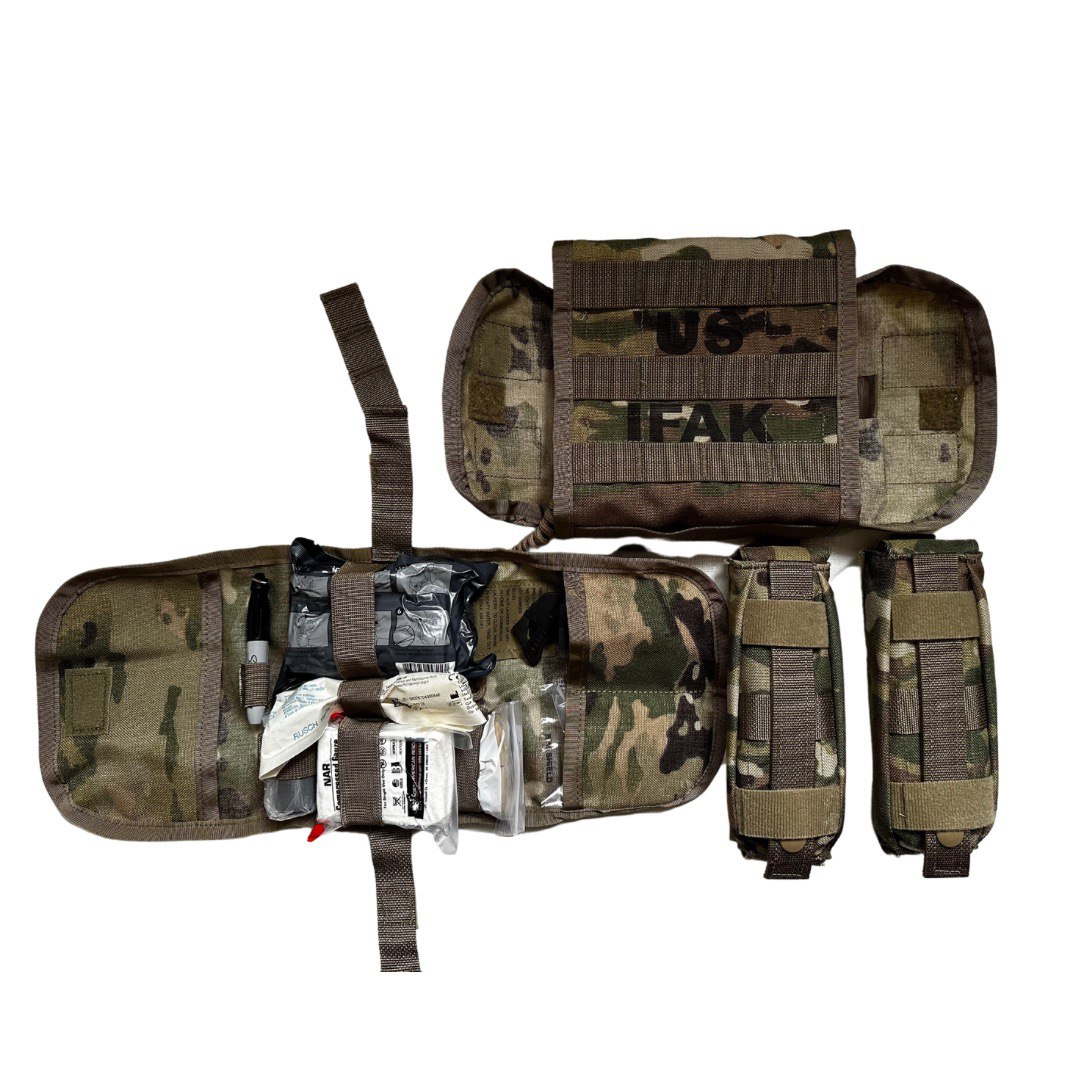
Since ready-made pre-equipped first aid kits are not issued to the civilian population, you will likely have to assemble it manually. Therefore, in this material, we will describe possible analogs for certain components to make them easier to find.
So, the tactical first aid kit should be equipped as follows:
Tourniquet
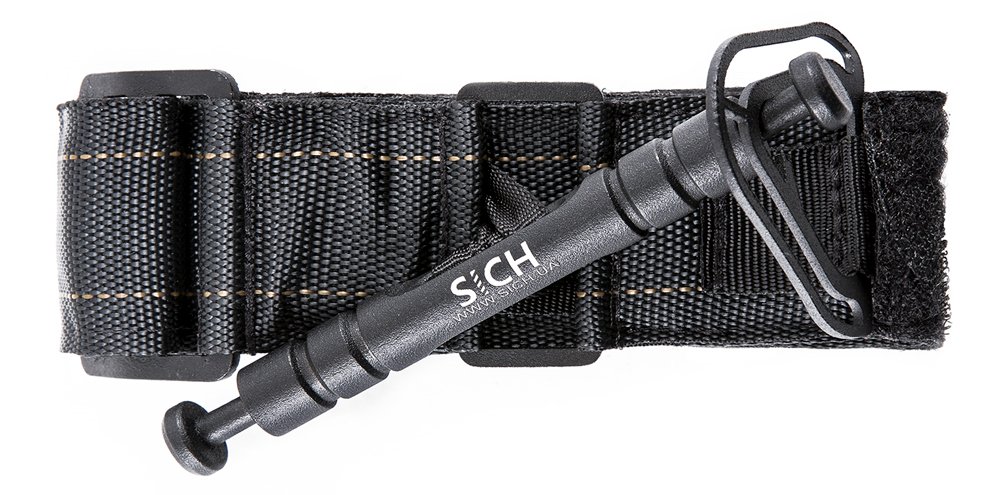
The tourniquet is designed to stop or significantly reduce massive bleeding and is one of the main elements of a tactical first aid kit. According to military standards, there should be two - one inside the kit and the other outside for easy access; however, for the civilian population, this is not mandatory.
We strongly recommend against purchasing Chinese tourniquets or tourniquets from unreliable Ukrainian manufacturers, as they may fail at the most crucial moment.
Currently, there are several main types of tourniquets, namely:
- Esmarch (obsolete and no longer included in tactical first aid kits)
- Stretch (SWAT-T) and specialized tourniquets (CAT Gen 7, SOFT-T, SAM Tourniquet)
- Additionally, you may encounter tourniquets made in Ukraine, such as SICH or PITON, which have good quality, but unfortunately, the production of these tourniquets in Chernihiv has now been discontinued
Compression Bandage
The bandage is applied to tightly dress a wound and stop bleeding. It is used in cases where the injury has not caused massive blood loss, and there is no need to apply a tourniquet, or after a tourniquet has already been applied. Bandages are available in different sizes, usually 4 or 6 inches. We recommend choosing a 6-inch bandage, but in both cases, they are suitable for inclusion in a tactical first aid kit.
The most popular models for equipping NATO military first aid kits are:
- CAT Gen 7, made by North American Rescue;
- CAT Gen 6, made by North American Rescue;
- SOF TT, made by Tactical Medical Solutions;
- TM Tourniquet, made by Combat Medical Systems;
- SAM XT, made by SAM Medical.
Hemostatic Dressing
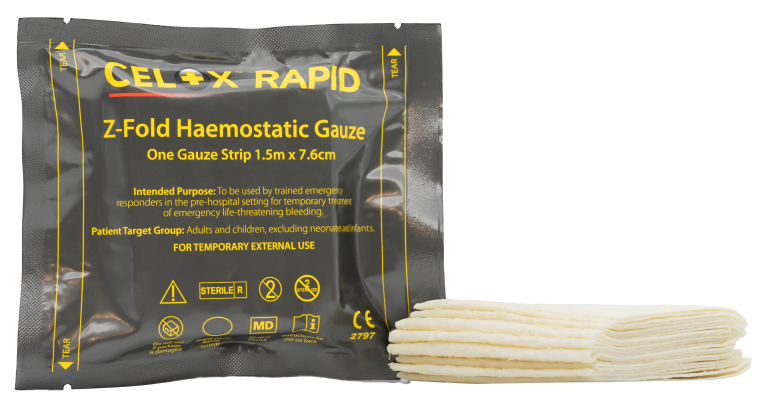
Hemostatic agents are used to stop bleeding in deep wounds or areas where the application of a tourniquet is impossible. Hemostatics can have different forms - powder, piston, or gauze. Among them, a hemostatic dressing is considered the most convenient, as, unlike granular agents, it does not lose its properties under the influence of wind or rain, and it is easy to use even in stressful conditions.
We recommend the following models for equipping a tactical first aid kit:
- Combat Gauze Z-Folded, manufactured by QuikClot;
- Z-Medica EMS Rolled Gauze, manufactured by QuikClot;
- Rapid Z-Fold Gauze, manufactured by Celox;
- Hemostatic Wound Dressing, manufactured by Celox.
Nasopharyngeal Airway
Due to severe injuries, difficulties with breathing may arise in the victim, such as the tongue falling back due to complete or periodic loss of consciousness or incomplete patency of the airways. To restore and ensure further breathing, a nasopharyngeal airway is used.
For this purpose, use:
- Nasopharyngeal Airway Dynarex, made by MedSource;
- Nasopharyngeal Airway, made by Medicare;
Occlusive Dressing
Lung injuries are called pneumothorax. With a loss of airtightness of the chest, the victim's breathing becomes difficult or impossible altogether. Emergency assistance for pneumothorax involves urgently restoring the airtightness of the chest using an occlusive dressing.
We can recommend the following models:
- Occlusive Chest Seals, made by Foxseal;
- HyFin Vent Chest Seal Twin Pack, made by North American Rescue;
- DualSeal Chest Seal Two-Pack, made by H&H Medical Corporation;
- Chest Seal Combo Pack, made by Beacon Medical.
Thermal Blanket
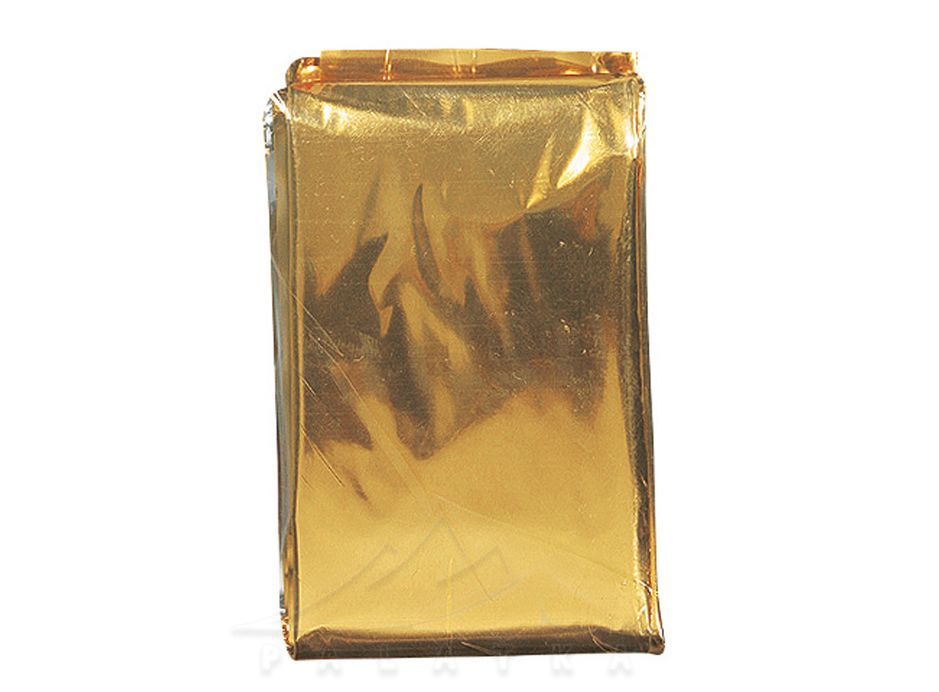
Blood, besides its function of transporting oxygen, also plays a crucial role in our body's thermoregulation. Therefore, even after stopping bleeding, the victim remains at risk, as they may fall victim to hypothermia. Rescue blankets (thermal blankets) are used to maintain body heat by reflecting the body's heat radiation.
Best models of thermal blankets:
- Tatonka Rettungsdecke TAT, made by Tatonka;
- ZARYS Emergency blanket, made by ZARYS;
- Salewa Rescue Blanket, made by Salewa.
Special Medical Equipment
Special medical equipment is an essential component and a mandatory inclusion in the standard IFAK tactical first aid kit. In critical situations, rapid medical assistance may depend on the availability of necessary equipment and tools.
Considering the critical necessity, the first aid kit should include:
- Trauma shears;
- Gloves;
- Marker;
- Decompression needle;
- Reinforced tape.
Regardless of the fact that special medical equipment should always be on hand, the key is the ability to use it correctly. Therefore, before using any medical equipment, it is important to undergo training and education to increase the chances of successfully saving the patient's life. It is also necessary to remember that special medical equipment should be periodically checked for damage and technical readiness for use. Responsible handling of this can help avoid unwanted consequences and ensure the maximum effectiveness of using medical equipment in extreme situations.
What Can Be Added to the Tactical First Aid Kit?
Civilians are allowed to add medical products to the first aid kit that are not supposed to be there according to military medicine protocols. Primarily, this concerns medications that owners have individual needs for (for example, insulin for diabetics). However, there is also a general list of useful medical products that can be included in the first aid kit:
- Chlorhexidine digluconate;
- Non-woven medical plaster;
- Single-use syringe;
- Saline solution ampoules 5 ml;
- Fabric medical plaster.
However, it is recommended for military personnel to keep the composition of the individual first aid kit unchanged. This is because assistance is provided using the injured person's first aid kit, and standardizing its content facilitates faster disassembly and provision of assistance.
FAQs About Ready-Made Tactical First Aid Kits
What is a Tactical First Aid Kit (IFAK)?
A Tactical First Aid Kit (IFAK) is a set of medical supplies and tools designed to provide first aid on the battlefield or in emergency situations.
What is typically included in a Tactical First Aid Kit according to the IFAK standard?
A Tactical First Aid Kit (IFAK) typically includes bandages, dressing materials, tools (scissors, forceps), anti-shock agents (antiseptics, analgesics), a tourniquet for stopping bleeding, a thermometer, and gloves.
How to use a Tactical First Aid Kit (IFAK) correctly?
When using a Tactical First Aid Kit (IFAK), familiarize yourself with the contents and functionality of each tool and medication. In extreme situations, remain calm, act systematically, and provide first aid according to training and practice. If possible, seek medical assistance from an experienced specialist as soon as possible.
